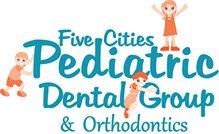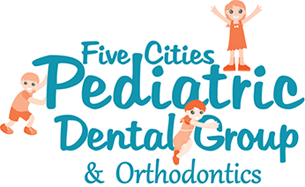Sometimes a child's level of comfort with the dental office environment does not permit treatment while conscious. Alternatively, the number of teeth needing treatment may simply be too much for a child to tolerate awake. Anxiety, pain levels, and past dental experiences are important factors in this dynamic. In these cases, sedation or general anesthesia are important treatment options that can facilitate safe completion of treatment while minimizing negative dental experiences. We are pleased to offer our patients the option of comfortable, safe, and effective sedation dentistry. Patients who benefit from sedation dentistry may have:
- A fear or anxiety of being at the dentist
- A hard time sitting still for long periods of time
- A hard time getting (and staying) numb from anesthetics
What is Sedation Dentistry?
Sedation dentistry allows our pediatric specialists to provide a variety of dental procedures safely and comfortably for children & teenagers who experience anxiety when visiting the dentist. There are several benefits of sedation dentistry, including:
- Reduced or no memory of undergoing the procedure
- Diminished sense of time while under sedation
- Diminished sense of smell or sound
- Reduction of fear and anxiety during treatment
I'm nervous about my child being unconscious. What levels of sedation are available?
Sedation dentistry is closely regulated by California law, and the training that our pediatric dentists and anesthesiologists have completed has provided them with plentiful experience to administer sedation safely. There are three sedative states at which are administered in our practice: mild sedation, moderate sedation, and general anesthesia.
- Mild Sedation - mild sedation, also known as anxiolysis, is the lightest form of sedation dentistry and is appropriate for patients with mild anxiety in the dental setting. Mild sedation may be administered orally or inhaled; patients remain awake or lightly sleepy throughout the entire procedure and are able to breathe on their own, and they will feel a sense of relaxation. Patients typically recover from mild sedation within a few hours after the procedure is complete. When only nitrous oxide/oxygen (laughing gas) is used for mild sedation, the effects completely diminish after breathing for 5 minutes without the gas.
- Oral Conscious (moderate) Sedation (OCS) - Used for patients with mild-moderate dental anxiety and for patients who need longer or more complex procedures, oral conscious sedation refers to the use of sedative medications administered orally. With oral conscious sedation, the child may be awake & responsive during the procedure, may drift into a sleepy state at times, or may even become agitated. It is recommended that patients receiving conscious sedation have a parent or caretaker accompany them to appointments because it can take several hours for the sedative to wear off and driving may be unsafe. Although the sedative medications used during conscious sedation diminish the memory of the procedure, some patients may retain a memory. OCS is appropriate method to manage anxiety when 1 or 2 areas (i.e., upper right, lower left) of a child's mouth need treatment.
- General anesthesia (GA) - Patients being treated under general anesthesia are completely unconsciousness during their dental procedure and have no recollection of the treatment. Similar to a hospital operating room, an anesthesiologist is present at all times, administering the anesthesia and monitoring the child's vital signs while the pediatric dentist focuses on treating the mouth and teeth. It is recommended that patients receiving general anesthesia be accompanied at the appointment by two adults. It can take several hours for the sedative medications used during general anesthesia to wear off, during which time the child must be closely monitored. General anesthesia can be completed in the comfort of our office, or in a local hospital. GA may be the best method of care when 3 to 5 areas of the mouth are in need of treatment, when anxiety is severe, or when a child is very young and cooperation is minimal.
How are sedatives administered?
- Inhalation – Nitrous oxide, or laughing gas, is combined with oxygen and inhaled through the nose. This is the most frequently used method for easing mild to moderate anxiety in pediatric dentistry. Recovery is quick so the patient can resume normal activities quickly. Other inhaled medical gasses are combined with nitrous oxide & oxygen during general anesthesia, which induce unconsiousness very rapidly.
- Oral – An common technique for dental sedation is an orally administered sedative. It's easy and doesn't require the use of needles. Your child will be given a sedative liquid or tablet, taken prior to starting procedures, relaxing the child by the time treatment begins.
- Intravenous (IV) - with IV sedation, a sedative is administered intravenously, or directly into a vein. This modality will quickly affect a child's state of consciousness and can be continued as long as necessary for the procedure.
What does it mean to be a licensed sedation or general anesthesia provider?
A heathcare provider who is licensed to administer oral concious sedation or general anesthesia has received additional specialty training beyond dental or medical school. They are legally certified by the State of California's Dental or Medical Board to deliver sedative drugs that alter a patient's consciousness in order to facilitate comfortable treatment with minimal anxiety.
Please contact our practice to schedule a consultation, learn more about sedation dentistry, and find out which sedation dentistry method is right for your child.


